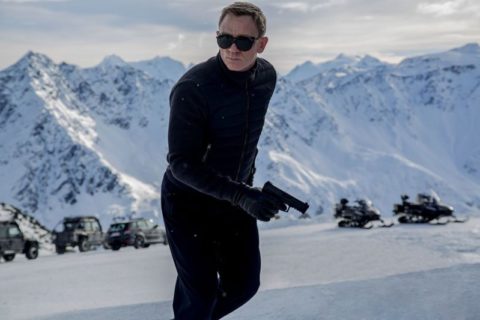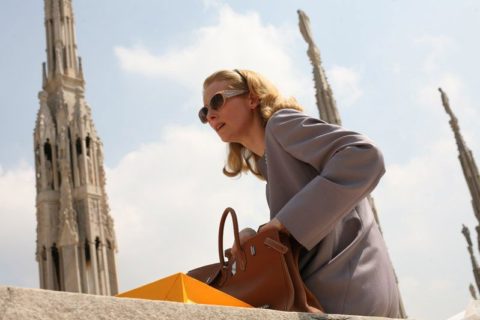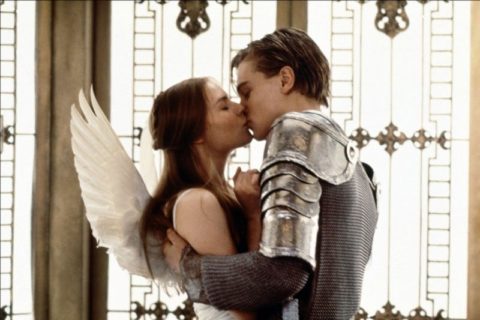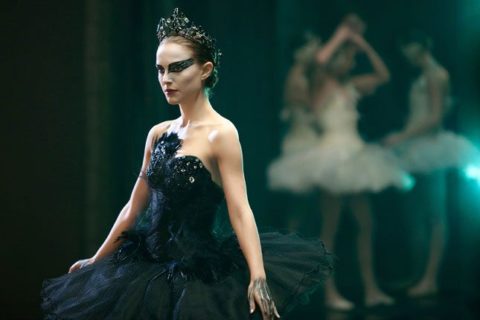The 10 best designer wardrobes in film


This Friday, Spectre finally opens, and with it will come a completely Tom Ford-clad James Bond. (Bless us everyone.)
This marks the third time Tom Ford has dressed Bond, with the designer having worked closely with costume designer Jany Temime to ensure the tailor-made pieces do Ian Fleming’s hero aesthetic justice.
“I could not be happier to be dressing Daniel Craig as James Bond again in the upcoming film, Spectre,” Ford said in a statement. “James Bond epitomizes Tom Ford in his elegance, style, and love of luxury. It is an honour to move forward with this iconic character.”
And we agree. Not just because we believe in the magic of Tom Ford and Jim (my nickname for James), but because movie wardrobes look even better with the helping hand of a big-name collaborator. Or, at least that’s what we’ve taken from the following designer-built costumes.
Observe and/or join us.

Movie: I Am Love
Designer: Jil Sander
Fashion is an important fixture in Luca Guadagnino’s I Am Love, so it makes sense that Raf Simons for Jil Sander was recruited to outfit Tilda Swinton, whose character is the wife of a wealthy Italian textile merchandiser (see: quality fabrics, clean cuts) who ends up having an affair with her son’s friend in San Remo. Her outfits follow her evolution—or, as Swinton told Elle, “Raf Simons and his team were so responsive to our challenge, which was to make a responsive wardrobe for an uncommunicative person.”
Movie: Belle de Jour
Designer: Yves Saint Laurent
Back in 1967, Yves Saint Laurent convinced director Luis Bunuel to keep overly short skirts out of Belle de Jour, a movie that would help cement Catherine Deneuve as a high-end style fixture. As a result, we saw her decked out in classic pieces that are prim, proper, elegant and have consistently acted as style mainstays, regardless of trends or the current fashion landscape. (Which might explain why we still romanticize Deneuve’s style so much.)

Movie: Romeo + Juliet
Designer: Prada
The year is 1996. What matters most? Leonardo DiCaprio dressed like a knight, looking at Claire Danes wearing angel wings, all through a freakishly large aquarium. (Also: their kiss, and probably Leo’s hair.) So maybe that’s why we forget that Prada designed the angel dress that Danes’ Juliet first met Leo’s Romeo in—or why we don’t talk about the Prada suit Romeo wore to his wedding. Because as good as “Kissing You” is, it wouldn’t have been the same without that white dress.
Movie: Barbarella
Designer: Paco Rabanne
Based on the French comic strip created by Jean Claude-Forest, Barbarella introduced both Jane Fonda and the concept of female sexual empowerment to the masses, and later became a talking point for feminism and sexual liberation. Of course, it helped that the revealing costumes —created by Paco Rabanne—assisted in establishing Fonda as a sex icon, as well as helping paint the future as a space (no pun intended) with room for everything from exhibitionism to embellished onesies.

Movie: The Great Gatsby
Designer: Prada
Considering director Baz Luhrmann had already joined forced with Prada for Romeo + Juliet, it makes sense that with the recasting of DiCaprio, we saw a return to luxe, detailed costumes, too. (Right?) However, Miuccia Prada told Vogue that despite the excess of the 1920s, this wardrobe “was not about glamour,” and was instead about “personality, very internalized.”
“It was meant to be about light,” she continued. “It became about money, because Luhrmann wanted to show [Daisy] as the most beautiful and rich woman on earth.”
Movie: Breakfast At Tiffany’s
Designer: Givenchy
Arguably, we owe Holly Golightly’s iconic black dress to Audrey Hepburn’s friendship with Hubert de Givenchy. The two met in 1954, eventually worked on everything from the actress’ Oscar gown to her Sabrina wardrobe. Eventually, they landed Breakfast At Tiffany’s, where Hepburn’s little black dress launched a million others (and Halloween costumes), and most recently fetched £467, 200 at auction. YGG.

Movie: A Single Man
Designer: Tom Ford
Directed by Tom Ford, it’d be full-on disgraceful if A Single Man was outfitted by anybody else — especially since the film takes place in the 1960s, and star Colin Firth’s character is consistently clad in the tailored, sleek suits the designer’s renowned for. Whether a testament to the label’s timelessness or to Firth’s ability to wear a top hat and still look like a million doll-hairs, A Single Man may be the greatest Ford advertisement yet.
Movie: The Fifth Element
Designer: Jean Paul Gaultier
Upon its release in 1997, Luc Besson’s sci-fi thriller, The Fifth Element, may have been beyond our then-middle school-aged scope, but as adults we can admit and embrace the effect that costumes by Jean Paul Gaultier had. Thanks to his blend of minimalism, bright colours, and cone bras, his pieces helped establish 23rd-century NYC as a cold, dangerous, and clinical place. (But especially when referring to Milla Jovovich’s bandage dress.)

Movie: Black Swan
Designer: Rodarte
So there’s a little controversy behind this one. In February 2011, costume designer Amy Westcott went on record that contrary to the praise surrounding Rodarte, the sisters only worked on seven of the film’s iconic pieces. Also, they weren’t eligible for any awards because they weren’t part of the Costume Designers Guild, and because of this (and many corresponding articles), the fashion world was swept with upset. The moral of the story? Black Swan was the wrong movie to see with my best friend on New Year’s Eve, 2010 when I was feeling emotionally fragile.
Movie: American Gigolo
Designer: Armani
When you think of a very wealthy Richard Gere — or the 1980s — you think of Armani, the fanciest suit of them all. This, of course, is in part of Armani’s creations for 1980’s American Gigolo, a movie about a male escort whose life is not nearly as glamorous as he’d like us to think. As explained by Clothes on Film, Armani was revolutionary for its evolution of shape, fabric, and colour, which helped propel the designers into super-stardom as the glory and money-defined decade began thirsting for aesthetic status.







